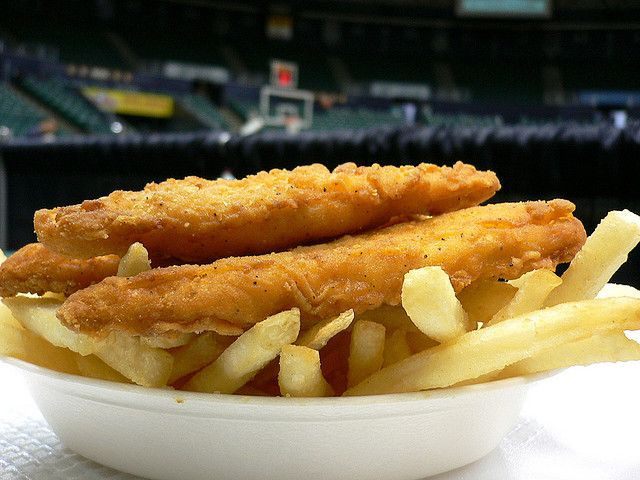MRI Study Of Brain After High And Low Glycemic Foods Disproves Concept Of Food Addiction

Do our stomachs or brains govern hunger? Or is it something far more nefarious like addiction?
Often cravings and hunger seem to come from a need for a particular taste or texture of food. However, could eating the rich, sweet, salty, and otherwise unhealthy foods we crave just make us hungrier?
A new study using magnetic resonance imagining (MRI) technology to study the brain's reactions to food in 11 men indicates that addiction to foods can occur, and the digestion of unhealthy foods makes us hungrier.
In the study, blood sugar levels and hunger ratings were measured for each man every hour for five hours after eating a meal — either high or low on the glycemic index. The glycemic index of a food is a measurement of how quickly it increases the levels of sugar in the blood. Usually, it is healthier to choose foods lower on the glycemic index, as they will gradually increase blood sugar and keep one feeling fuller and satisfied for a longer period of time. Foods low on the glycemic index include fruits, beans, whole grains, and vegetables.
However, foods high on the glycemic index are quite palatable and craveworthy. These foods include sugary beverages, breads, potatoes, and other foods high in sugar and carbohydrates. Before this study, it was accepted that giving into a craving for potato chips may make you satisfied for longer than a healthier snack. However, the study has indicated the opposite.
The 11 men were given a test meal, either low or high on the glycemic index. After a five-hour observation period, the men who had eaten the meal high on the glycemic index were consistently hungrier than the men who had eaten a meal lower on the glycemic index. Most notably, the blood sugar levels of the men who had eaten a high glycemic index meal were very high after the first hour, but after the second hour, their blood sugar dipped below that of the men who had eaten a meal lower on the glycemic index. Meanwhile, the men who had eaten a meal low on the glycemic index had stable blood sugar levels for the five-hour period they were observed.
These results are noteworthy, as they go against previously held beliefs. The dip in blood sugar and the significant level of hunger after a high-glycemic index meal indicates a need to overeat after such a meal. Of course, because of their palatability, higher glycemic index foods are chosen over lower glycemic index foods and this can turn into a vicious cycle of overeating.
The MRIs revealed more on this. The neuroimaging technique was performed four hours after the subject's meal was eaten. Researchers found that blood flow increased in the right side of the brain, the region most concerned with reward, pleasure, and craving. While food is not an illicit drug, the cravings caused by hunger after a high glycemic meal can cause people to overeat — similar to substance abuse driven by sensations of pleasure from the brain.
However, this is not as dangerous as drug addiction and is ameliorable in the brain. The researchers suggest that the integration of lower-glycemic index foods into one's diet has the capacity to do away with overeating habits, as one will feel fuller and the brain will still give sensations of satisfaction instead of giving off the excess hunger signals it does after high-glycemic index meals.
Neuroimaging has revealed much about eating habits. David Ludwig, M.D., Ph.D., and lead author of this study explained, "These findings suggest that limiting high-glycemic index carbohydrates like white bread and potatoes could help obese individuals reduce cravings and control the urge to overeat." While the higher-glycemic index foods may taste great, the hunger that persists afterward leads people to eat more, with little preference for high- or low-glycemic index foods — the point is just to feel full and satisfied.
While food addiction is an inflammatory topic, the choices the study's subjects were still able to make regarding food, as well as identification of hunger versus fullness, indicate that food addition is not at play when it comes to unhealthy food. Consumption of unhealthy food is a choice; neuroimaging techniques indicate that overeating is a possibility but is reversible, unlike actual addictions. Further studies, according to the authors of this finding, will find out more regarding the actual experience of addiction to food.
Source: Lennerz BS, Alsop DC, Holsen LM, Stern E, Rojas R, Ebbeling CB, Goldstein JM, Ludwig DS. Effects of dietary glycemic index on brain regions related to reward and craving in men. American Journal of Clinical Nutrition. 2013.
Published by Medicaldaily.com



























